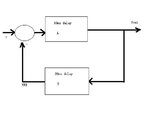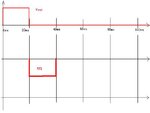suifengpiaoyang
Newbie level 5
sometimes I was thinking about feedback circuit, And got some questions about that
Imagine that: A system A with feedback B is shown as below, The system output Vout and the feedback system output VFB.
Assume that the system is stable which means the output Vout is stable before time 0ms.Suddenly the Vout has a puse(the lengh of pulse is 20ms) due to some reasons, And then the feedback system detecs this change and after 20ms delay of system B the output VFB starts a nagtive pulse to stop the chage of Vout.But due to the delay of system A, The VFB signal reach to Vout after 10ms,which of course is late. And in this way,the whole system will not be stable anymore!
So I am confused about feedback system,how dose it make system stable?Or am I thinking in a wrong way?
Imagine that: A system A with feedback B is shown as below, The system output Vout and the feedback system output VFB.
Assume that the system is stable which means the output Vout is stable before time 0ms.Suddenly the Vout has a puse(the lengh of pulse is 20ms) due to some reasons, And then the feedback system detecs this change and after 20ms delay of system B the output VFB starts a nagtive pulse to stop the chage of Vout.But due to the delay of system A, The VFB signal reach to Vout after 10ms,which of course is late. And in this way,the whole system will not be stable anymore!
So I am confused about feedback system,how dose it make system stable?Or am I thinking in a wrong way?
Attachments
Last edited:

